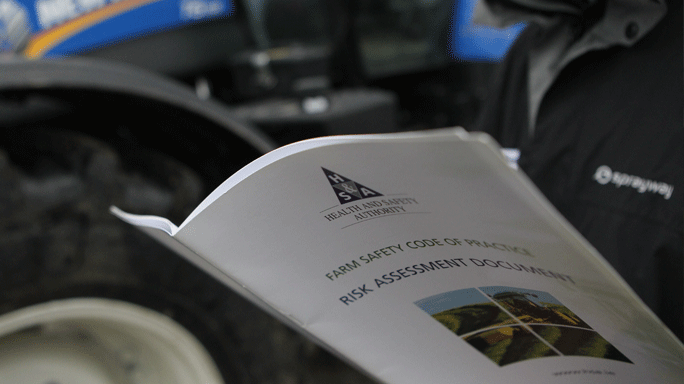High wind warning for Storm Lorenzo
GII Agribusiness All Beef Co-op Corporate Dairy Other animals Tillage

FORECASTERS Met Eireann have issued wind and rain warnings as Hurricane Lorenzo approaches our shores.
Harsh weather brings additional challenges to farms with the national forecaster issuing a Status Orange warning for the west and southwest coast.
Storm surges, including coastal flooding, with gusts of up to 100 to 130km/h have been forecast for Galway, Mayo, Clare, Cork, Kerry and Limerick throughout Thursday night and into the early hours of Friday.
A Yellow wind warning is in effect for the rest of the country, including Waterford, Wexford, Wicklow, Carlow, Kilkenny, Tipperary, Laois, Offaly, Kildare Longford, Westmeath, Meath and Dublin. It is expected that this yellow wind warning will produce winds with mean speeds of up to 50 to 65km/h with gusts of up to 100 km/h.
Spells of heavy rain are also forecast, reaching in excess of 50mm in parts of the west and northwest.
Safety
In advance of storm, all generators should be checked to ensure they are working if needed during a power outage.
The safety of you and your family should be prioritised, with as much preparation done in advance as possible.
The following guidelines on welfare and safety should be taken into account when preparing your farm for a storm.
- Do not put yourself at risk checking livestock that remain outside, but be prepared to check on them immediately following the storm.
- Check for loose slates and secure property. Make sure to close all doors, roll back roofs so heavy winds do not enter and cause roof damage.
- Store light items indoors, and tidy the farmyard.
- Ensure all clean water drains are free of debris and the outfall is clear.
- Ensure all gates are properly hanging and secured using steel hangers.
- All gates should be fastened using bolts or chains.
- Ensure all doors are hanging on hinges and have strong fasteners to keep them closed.
- Ensure all pen dividers and feed barriers in animal housing are properly secured using steel fixings.
- Ensure all sliding doors are hanging correctly, are freely running and are secured at the bottom.
- Ensure all gutters on buildings are secure and clean.
- Ensure all roof sheets are secure. When working at heights always hire in suitable lifting equipment – never work off a ladder.
- Immediately prior to the storm, turn off all electrical power and water in sheds (not fences).
- Move machinery into sheltered areas.
- Do not approach fallen power lines as they may still be live – contact ESB Networks before approaching any fallen power lines.
- Livestock may be better off outdoors. Especially where strong winds can damage sheds, posing a risk of injury or even worse to the animals. Turn animals out onto a large paddock that is surrounded by tall hedgerow under which animals can find shelter from wind and rain. Try to avoid using fields which have tall free-standing trees. These trees could be blown over, causing injury to animals and can be the target for lightning strike, electrocuting any animals standing nearby. Make sure all fencing is intact and that no loose wires, fence posts or other object can be blown around.
- If you are choosing to house your livestock, make sure the shed is ready, removing loose objects, liming cubicles and making sure the slurry scrapers and water troughs are working after a summer of disuse.
- Provide access to water, both for animals kept outside and indoors. A cow producing 30L of milk requires 75 – 90L or water per day.
- Animals kept indoors should have access to forage. Additional forage may need to be provided to animals kept outside for a prolonged period if grass covers are low.
First Published 2 October 2019
